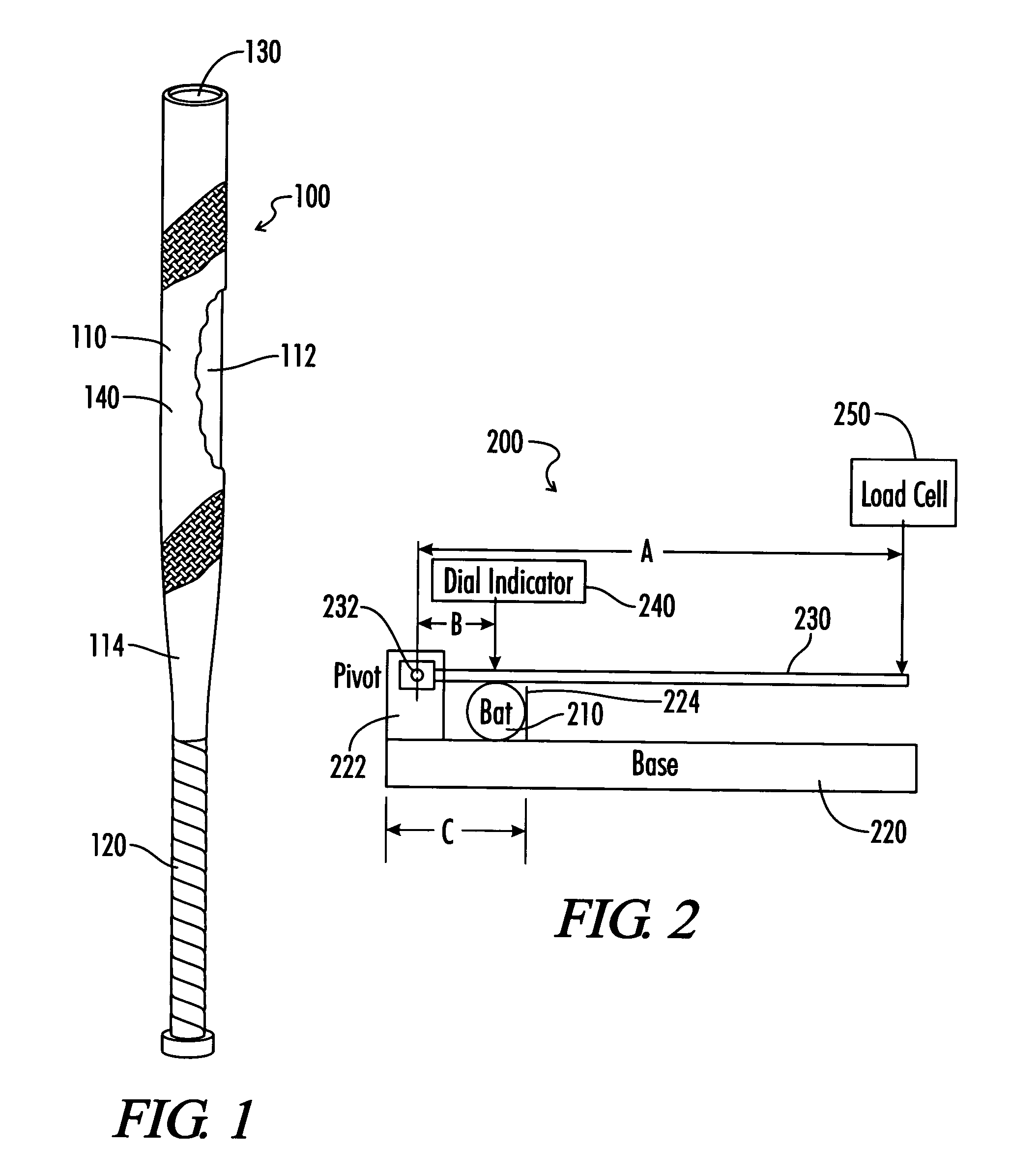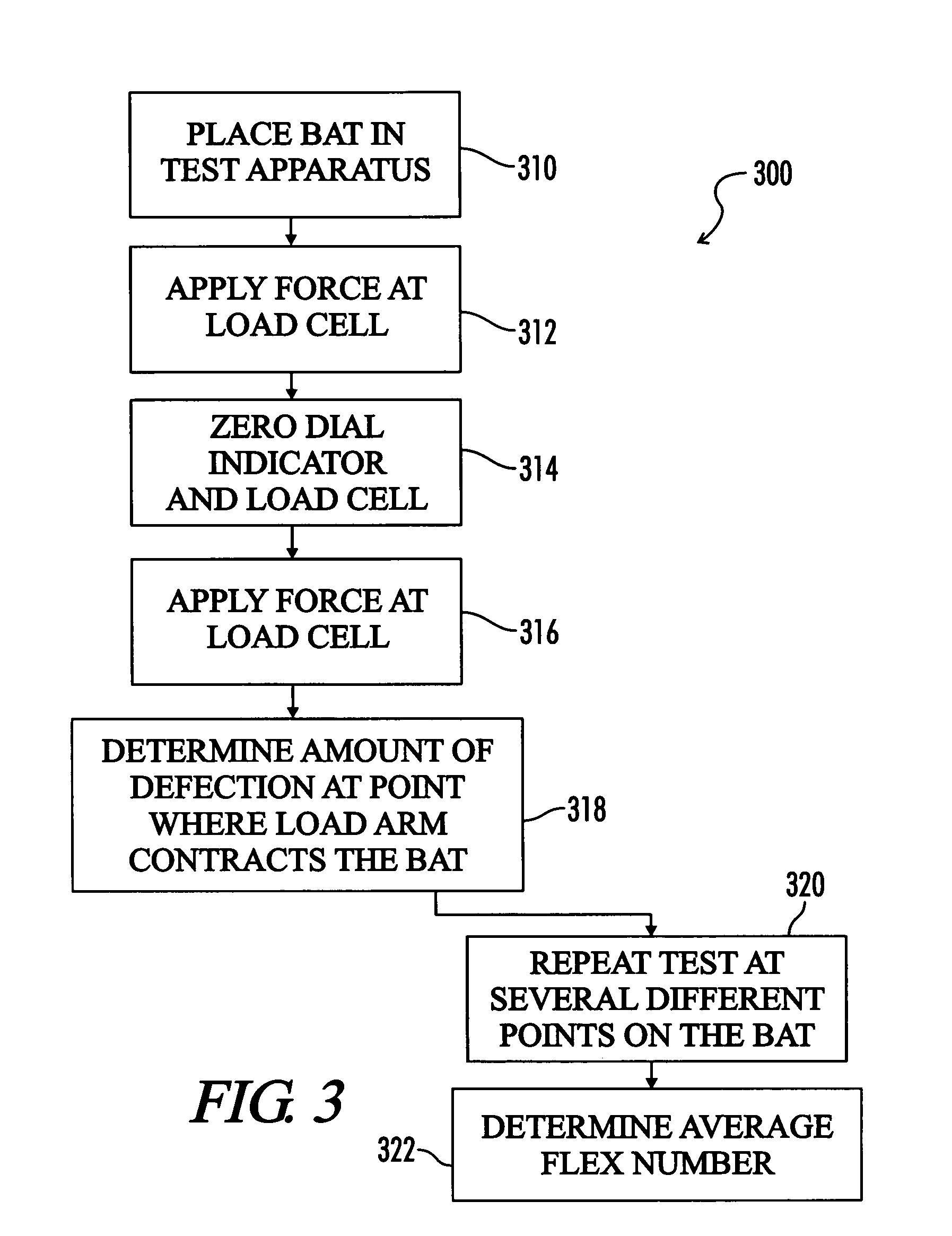Testing apparatus and method for composite articles
- Summary
- Abstract
- Description
- Claims
- Application Information
AI Technical Summary
Benefits of technology
Problems solved by technology
Method used
Image
Examples
Embodiment Construction
[0014]In the following detailed description of the preferred embodiments, reference is made to the accompanying drawings, which form a part hereof, and in which are shown by way of illustration specific embodiments in which the invention may be practiced. It is to be understood that other embodiments may be utilized and structural changes may be made without departing from the scope of the present invention.
[0015]The invention described in this application is useful with all mechanical configurations of bats including softball bats and baseball bats. FIG. 1 is an exploded view of one type of a bat 100 having a substantially tubular hitting surface 110 and a handle 120. The ball bat 100 is made of composite material. The main portion of the bat 100 includes a substantially tubular hitting surface 110. A handle 120 is attached to the hitting surface. The handle 120 and barrel are integral in the bat shown in FIG. 1. It should be noted that the bat could be formed of a separate handle ...
PUM
 Login to View More
Login to View More Abstract
Description
Claims
Application Information
 Login to View More
Login to View More - R&D
- Intellectual Property
- Life Sciences
- Materials
- Tech Scout
- Unparalleled Data Quality
- Higher Quality Content
- 60% Fewer Hallucinations
Browse by: Latest US Patents, China's latest patents, Technical Efficacy Thesaurus, Application Domain, Technology Topic, Popular Technical Reports.
© 2025 PatSnap. All rights reserved.Legal|Privacy policy|Modern Slavery Act Transparency Statement|Sitemap|About US| Contact US: help@patsnap.com



